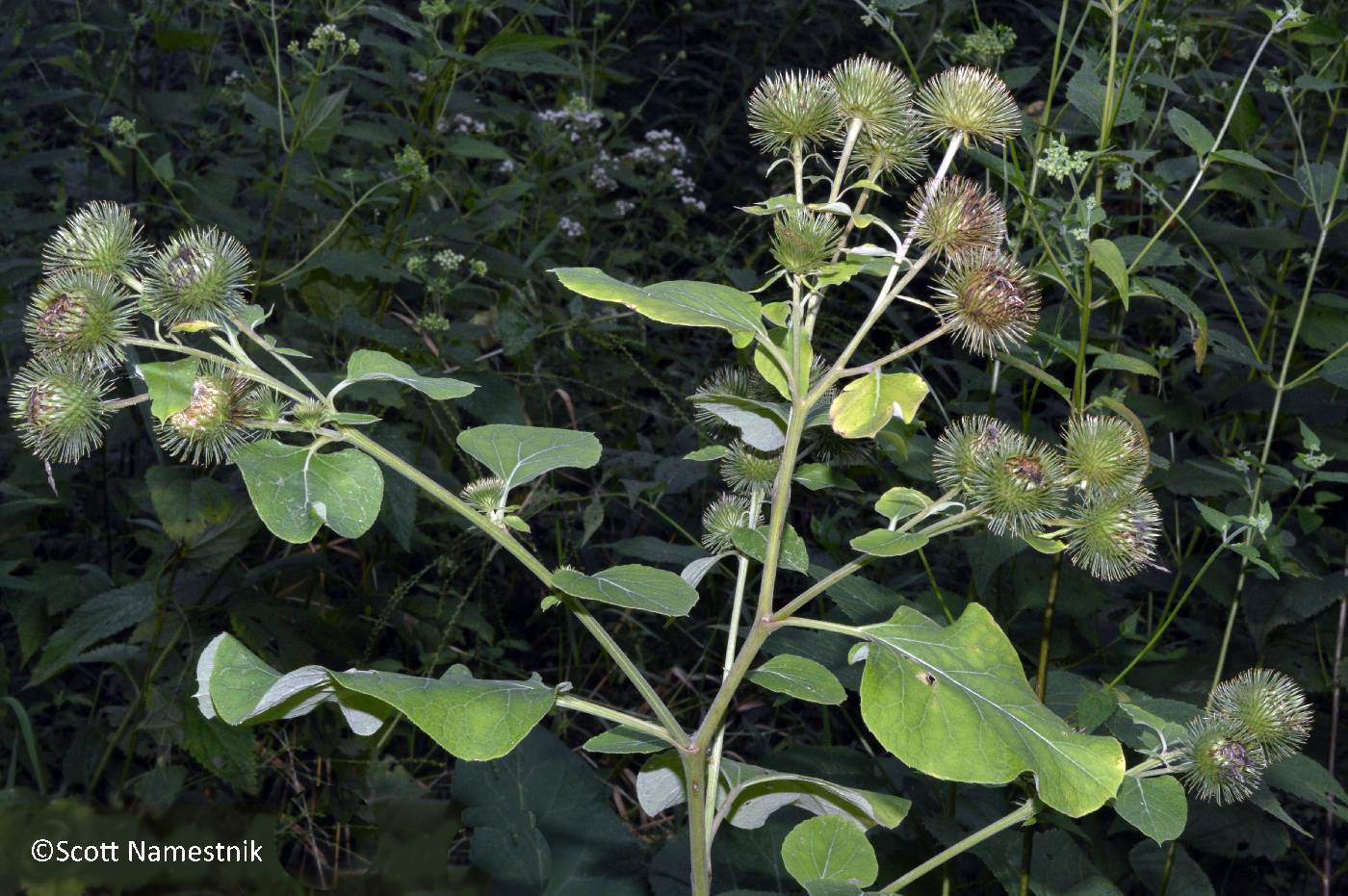
|
Family: Asteraceae |
Biennials or (monocarpic) perennials, 50-300 cm; herbage not spiny. Stems erect, openly branched, branches ascending. Leaves basal and cauline; long-petiolate; gradually smaller distally; blade margins entire or dentate (pinnately lobed or dissected), faces abaxially resin-gland-dotted, adaxially often tomentose. Heads discoid, in leafy-bracted racemiform to paniculiform or corymbiform arrays. ( Peduncles 0 or 1-9 cm.) Involucres spheric to ovoid. Phyllaries many in 9-17 series, outer and mid narrowly linear. bases appressed, margins entire. apices stiffly radiating, hooked-spiny tipped, inner linear, ascending or erect, straight tipped. Receptacles ± flat, epaleate, bearing subulate scales. Florets (5-)20-40+; corollas pink to ± purple, glabrous or glandular-puberulent, tubes elongate. throats campanulate. lobes narrowly triangular, ± equal; anther bases tailed, apical appendages ovate, obtuse to acute; style branches: fused portions distally hairy-ringed, distinct portions oblong, acute or obtuse . Cypselae obovoid. ± compressed, rough or ribbed, glabrous, attachment scars basal; pappi falling, of many bristles in 2-4 series . x = 18. At maturity the dry heads of Arctium species are readily caducous with the enclosed cypselae, and the hooked phyllary tips cling easily to fur or fabrics. Animal dispersal is a major factor in the spread of burdock species across North America. The burs are a major problem when they become entangled in the wool of sheep and fur of dogs and other animals. Published chromosome reports for Arctium other than n = 18 are probably in error because of difficulty in interpretation of somatic chromosomes (R. J. Moore and C. Frankton 1974).
Fls all tubular and perfect, the cor pink or purplish, with a slender tube, short throat, and long, narrow lobes; invol subglobose, its bracts multi-seriate, narrow, appressed at base, with a spreading, subulate, inwardly hooked tip; receptacle flat, densely bristly; anthers very shortly awn-pointed at the tip, evidently tailed at the base; style with an abrupt change of texture below the minutely papillate branches; achenes oblong, slightly compressed, few-angled, many nerved, truncate, glabrous; pappus of numerous short, subpaleaceous, separately deciduous bristles; coarse biennial herbs with large, alternate, entire or toothed to rarely laciniate, mostly cordate-based lvs and several or many heads. 5, temp. Eurasia. Gleason, Henry A. & Cronquist, Arthur J. 1991. Manual of vascular plants of northeastern United States and adjacent Canada. lxxv + 910 pp. ©The New York Botanical Garden. All rights reserved. Used by permission. |
This project was made possible in part by the Institute of Museum and Library Services [MG-70-19-0057-19].
Powered by Symbiota



